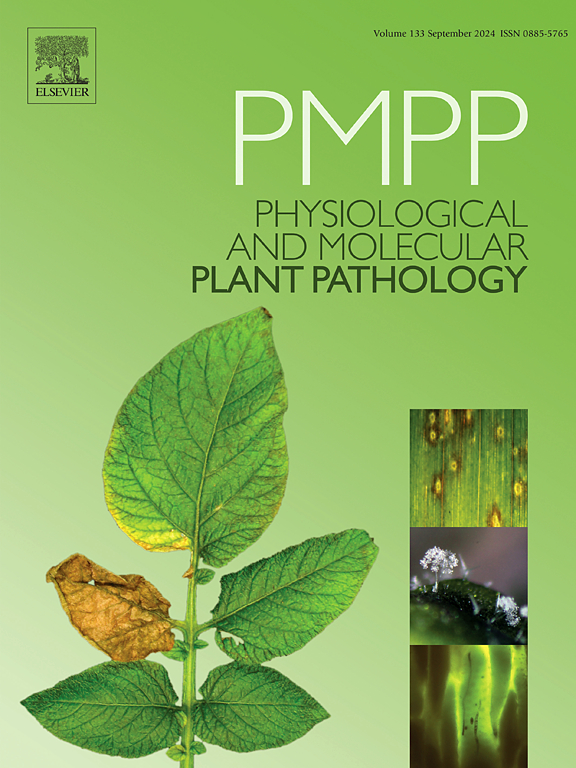Genome-wide association studies identify genetic loci for apple blotch symptom development
IF 2.8
3区 农林科学
Q2 PLANT SCIENCES
引用次数: 0
Abstract
Apple blotch disease caused by Diplocarpon coronariae poses a significant threat to apple production, particularly in low-input production systems. The fungus spreads on leaves, resulting in symptoms such as chlorosis, necrosis, premature defoliation and fruit spots, which severely reduce the yield when infestation occurs in early summer. Apple cultivars are susceptible to apple blotch; however, differences in susceptibility have been identified, as symptom development differs in a temporal manner. Apple blotch symptom progression data from laboratory experiments of 555 apple cultivars was used to conduct a genome-wide association study for the identification of regions in the apple genome associated to symptom delay. This study identified SNP markers associated with a delay in symptom development, with strong significant associations on chromosome 12, as well as on chromosomes 3, 13, and 16. The high heritability of the analyzed traits and the association of the genetic markers with several phenotypic traits highlight the potential for marker-assisted selection for this disease. These results support the development of sustainable breeding strategies for disease-resistant apple cultivars.
全基因组关联研究确定了苹果斑病症状发展的遗传位点
苹果斑病对苹果生产造成严重威胁,特别是在低投入生产体系中。这种真菌在叶子上扩散,导致黄化、坏死、过早落叶和果实斑点等症状,在初夏发生时严重降低产量。苹果品种易患苹果斑病;然而,已经确定了易感性的差异,因为症状的发展在时间上有所不同。利用555个苹果品种的苹果斑病症状进展数据进行全基因组关联研究,以鉴定苹果基因组中与症状延迟相关的区域。本研究发现了与症状发展延迟相关的SNP标记,在12号染色体以及3、13和16号染色体上具有很强的显著相关性。所分析性状的高遗传力以及遗传标记与几种表型性状的关联突出了标记辅助选择对该病的潜力。这些结果为制定抗病苹果品种的可持续育种策略提供了依据。
本文章由计算机程序翻译,如有差异,请以英文原文为准。
求助全文
约1分钟内获得全文
求助全文
来源期刊
CiteScore
4.30
自引率
7.40%
发文量
130
审稿时长
38 days
期刊介绍:
Physiological and Molecular Plant Pathology provides an International forum for original research papers, reviews, and commentaries on all aspects of the molecular biology, biochemistry, physiology, histology and cytology, genetics and evolution of plant-microbe interactions.
Papers on all kinds of infective pathogen, including viruses, prokaryotes, fungi, and nematodes, as well as mutualistic organisms such as Rhizobium and mycorrhyzal fungi, are acceptable as long as they have a bearing on the interaction between pathogen and plant.

 求助内容:
求助内容: 应助结果提醒方式:
应助结果提醒方式:


